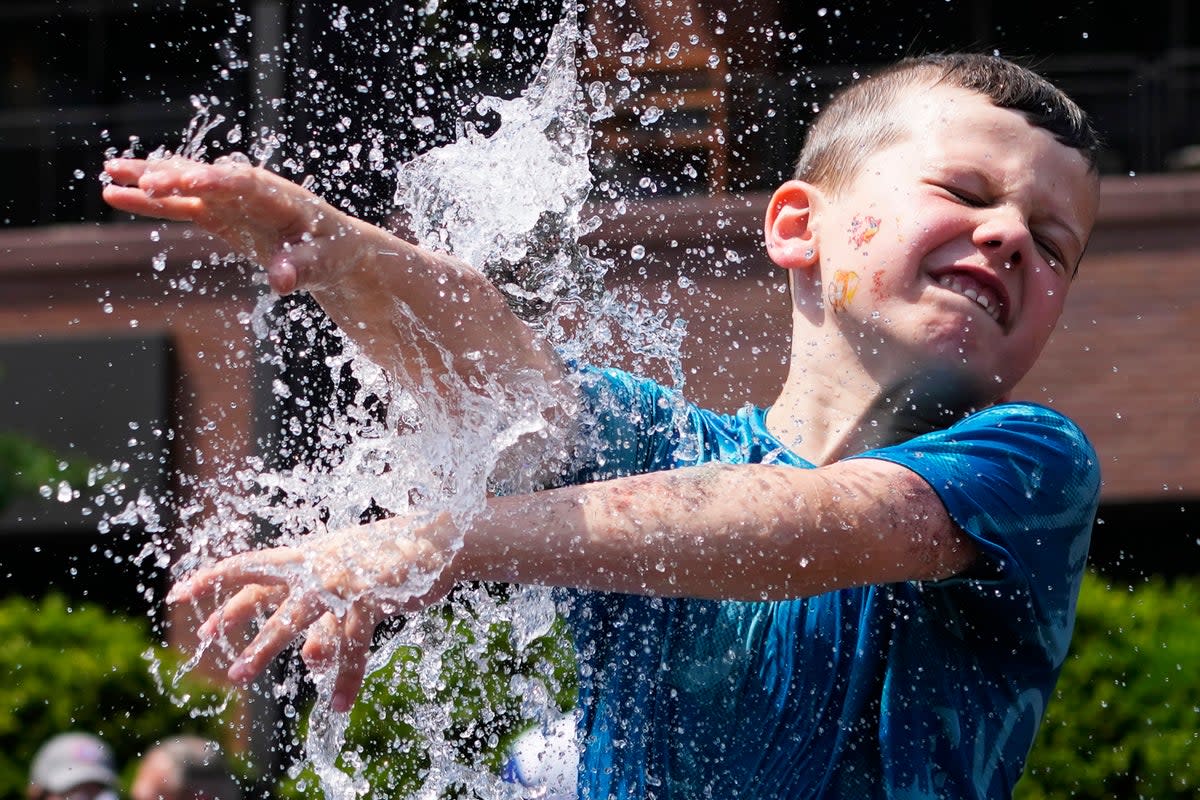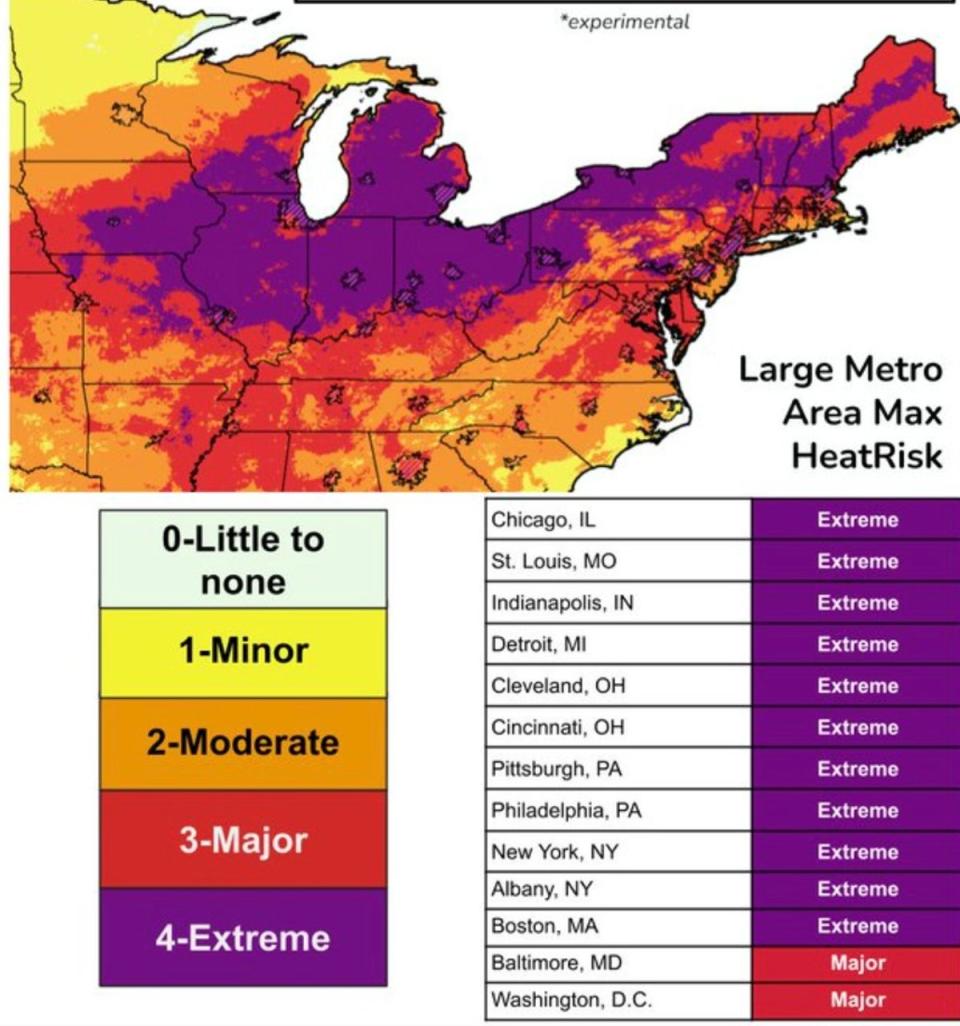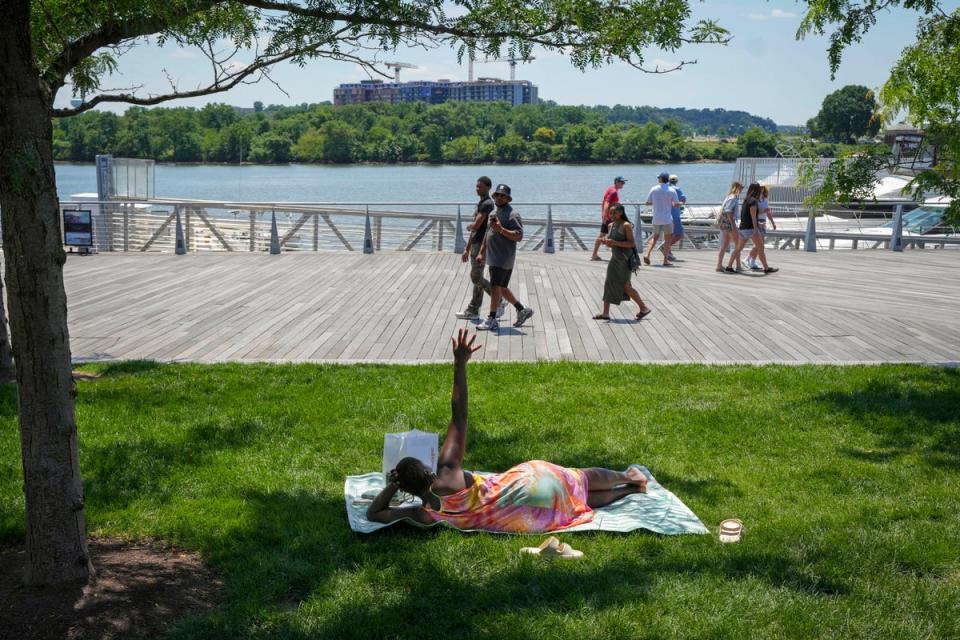Over 135 million Americans face dangerous ‘heat dome’ this week with temps soaring from New York to Chicago

More than 135 million Americans are at risk this week as a dangerous “heat dome” brings triple-digit temperatures to a swath of the US.
The heat wave is set to stretch from the Midwest to the Northeast for much of the week, impacting countless metro areas including New York, Boston, Chicago, Detroit and Washington, DC.
“We know it’s really the first hot weekend of 2024 for us,” National Weather Service senior meteorologist Andy Chiuppi told USA TODAY. “We’re just pushing out all the safety information: people make sure they’re staying hydrated. Even if you’re not going outdoors, make sure you’re drinking enough water and fluids.”
Several records could fall during the heat wave, which is set to arrive before the start of summer on June 20, according to the National Weather Service.

The latest “heat dome” comes as other areas of the country have already seen scorching temperatures in recent days. There is a “strong chance” that 2024 will be the hottest year on record at a global level due to the climate crisis, following the record-setting 2023.
In New York City, highs should be above 90 degrees Fahrenheit (F) starting Wednesday and lasting through Saturday. It’s the Big Apple’s first heat wave since September.
Pittsburgh residents should prepare for high temperatures at 94F or higher for the entire week.
Charleston, West Virginia, is expected to have temperatures above 90F for the entire week with a high of 96F projected for Friday. Indianapolis, Indiana, is slated to see temps in the mid-90Fs starting Monday through Saturday.

In total, more than 135 million Americans face temperatures above 90 degrees this week, with some areas crossing the 100-degree mark. There is no expected rain under the heat dome to provide temporary relief.
"The increased demand for cooling is going to be a problem here. This could have some impacts on the power grid," AccuWeather Chief Video Meteorologist Bernie Rayno said.
High temperatures will lead many to turn on air conditioning units to try and cool off, which could strain the grid as it tries to provide enough energy to heavy-populated areas.

There is also concern that the high temperatures and heat index could pose a deadly threat to people, especially the elderly, those with chronic illnesses or people spending long periods outside.
In Chicago, temperatures should be in the mid-90s through the week as officials are telling people to make sure to drink enough water, wear loose clothing and keep pets out of closed-cars.
"When you look at humidities that are above 60, that essentially envelops an individual, and it doesn’t allow heat to basically escape into the environment, allow you to cool down, so that humidity is in combination with higher temperatures are when we get concerned in the emergency department, and, quite frankly, across the city and public health officials," Dr George Chiampas, an emergency medicine physician with Northwestern Medicine, told CBS Chicago.


